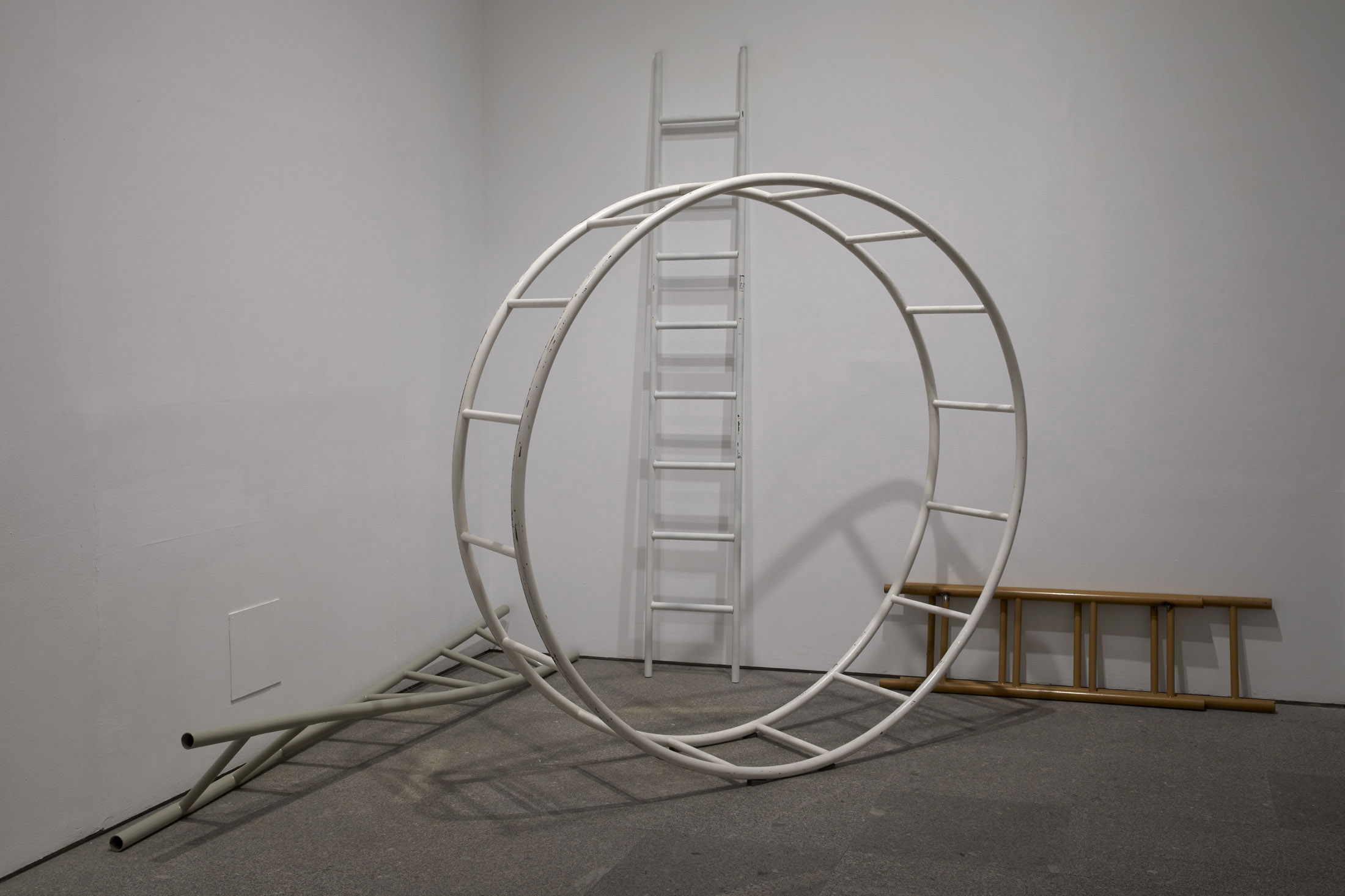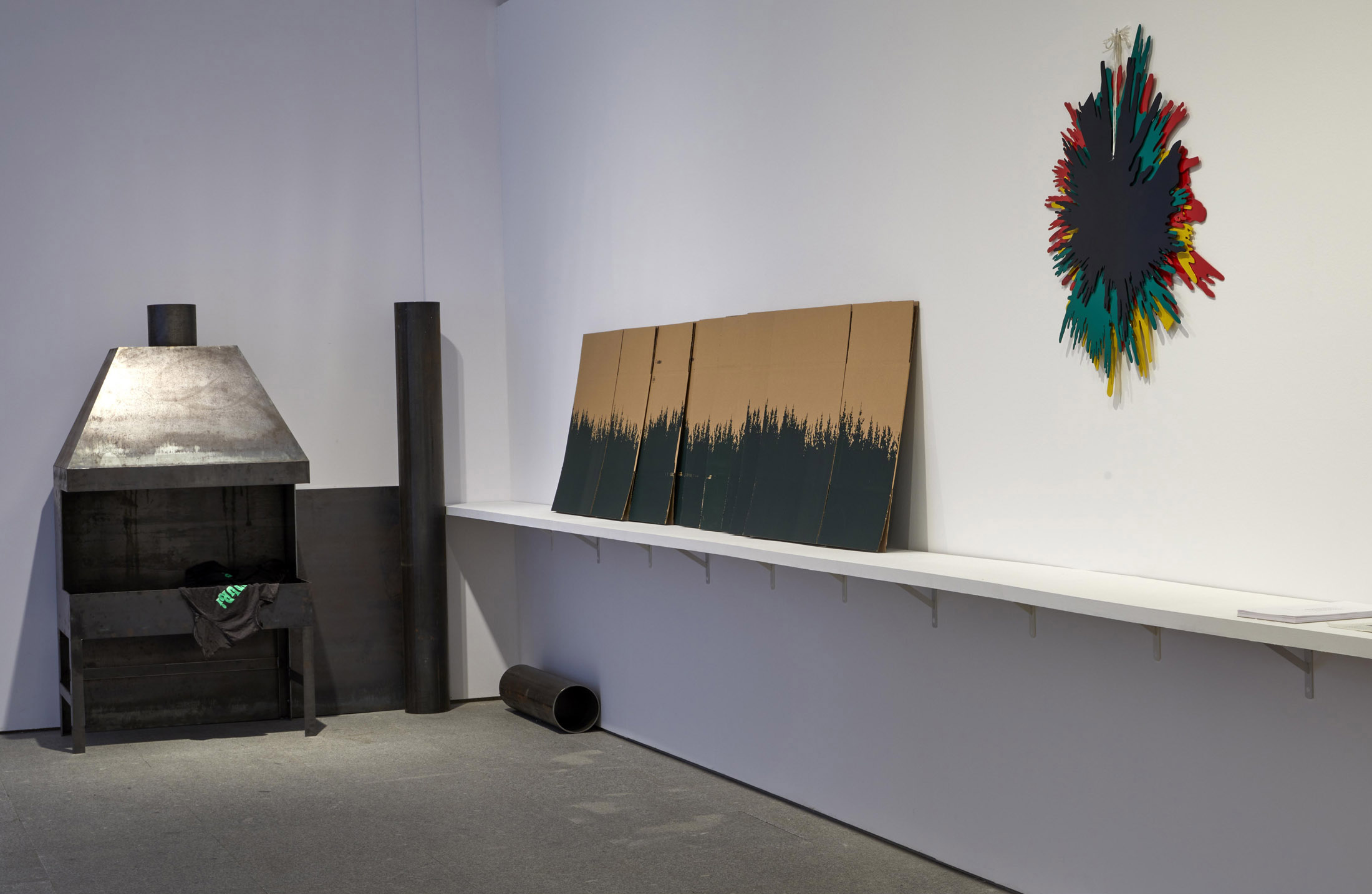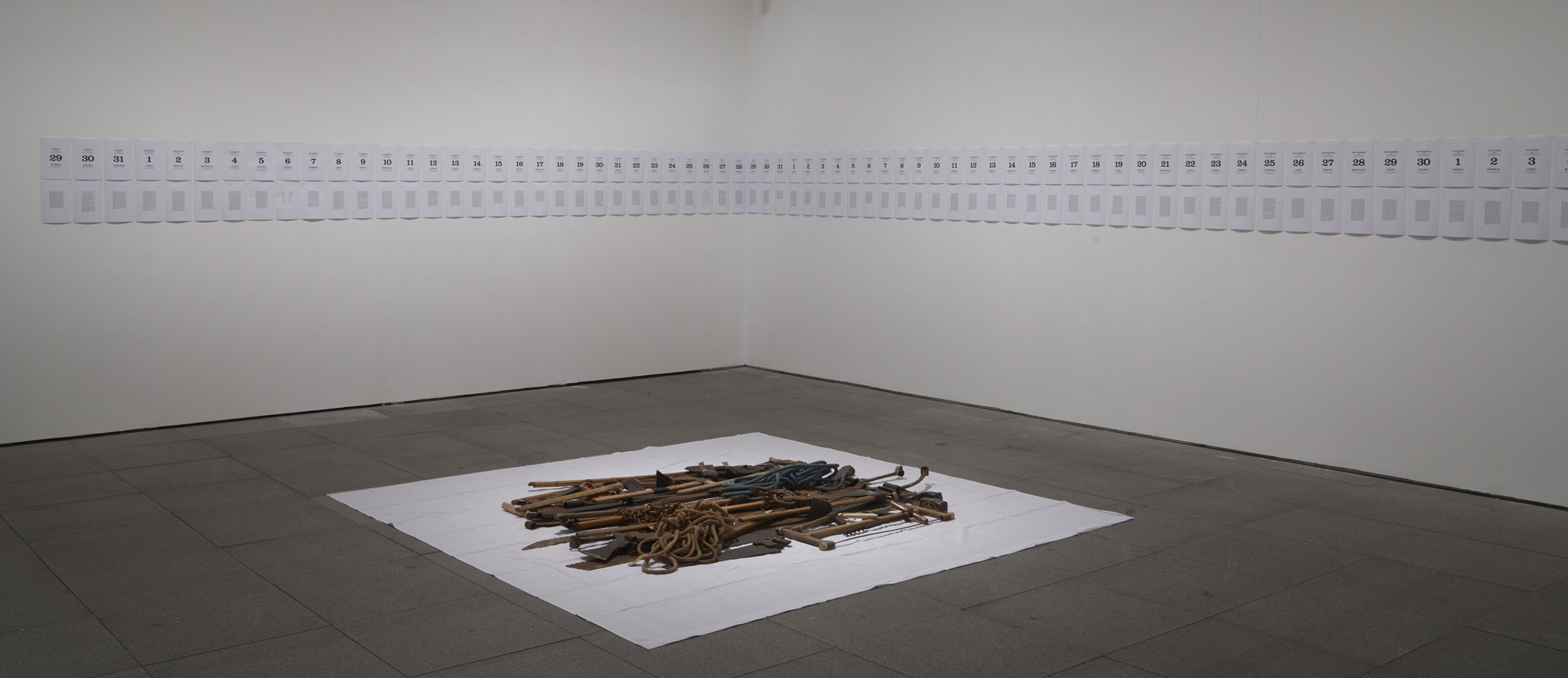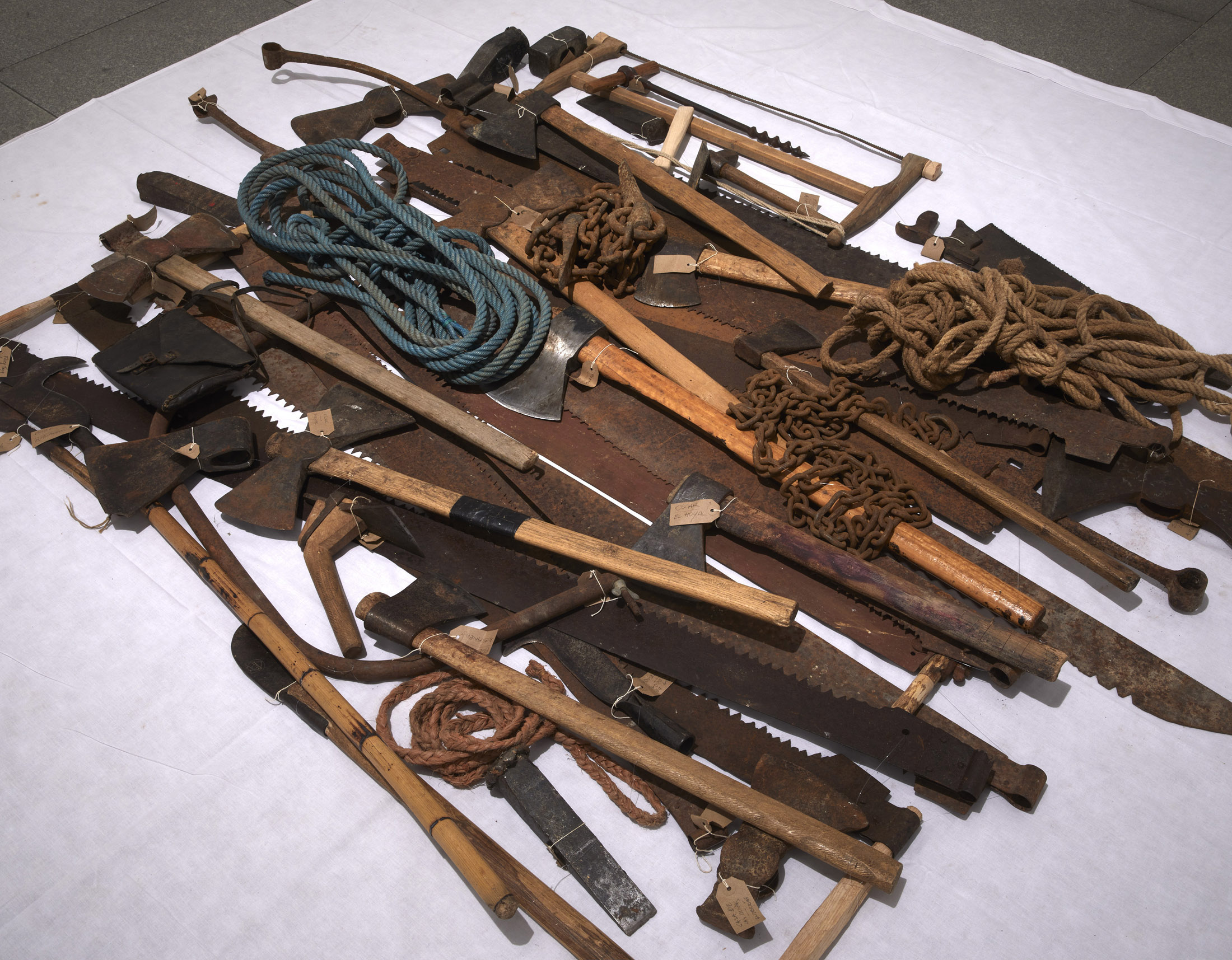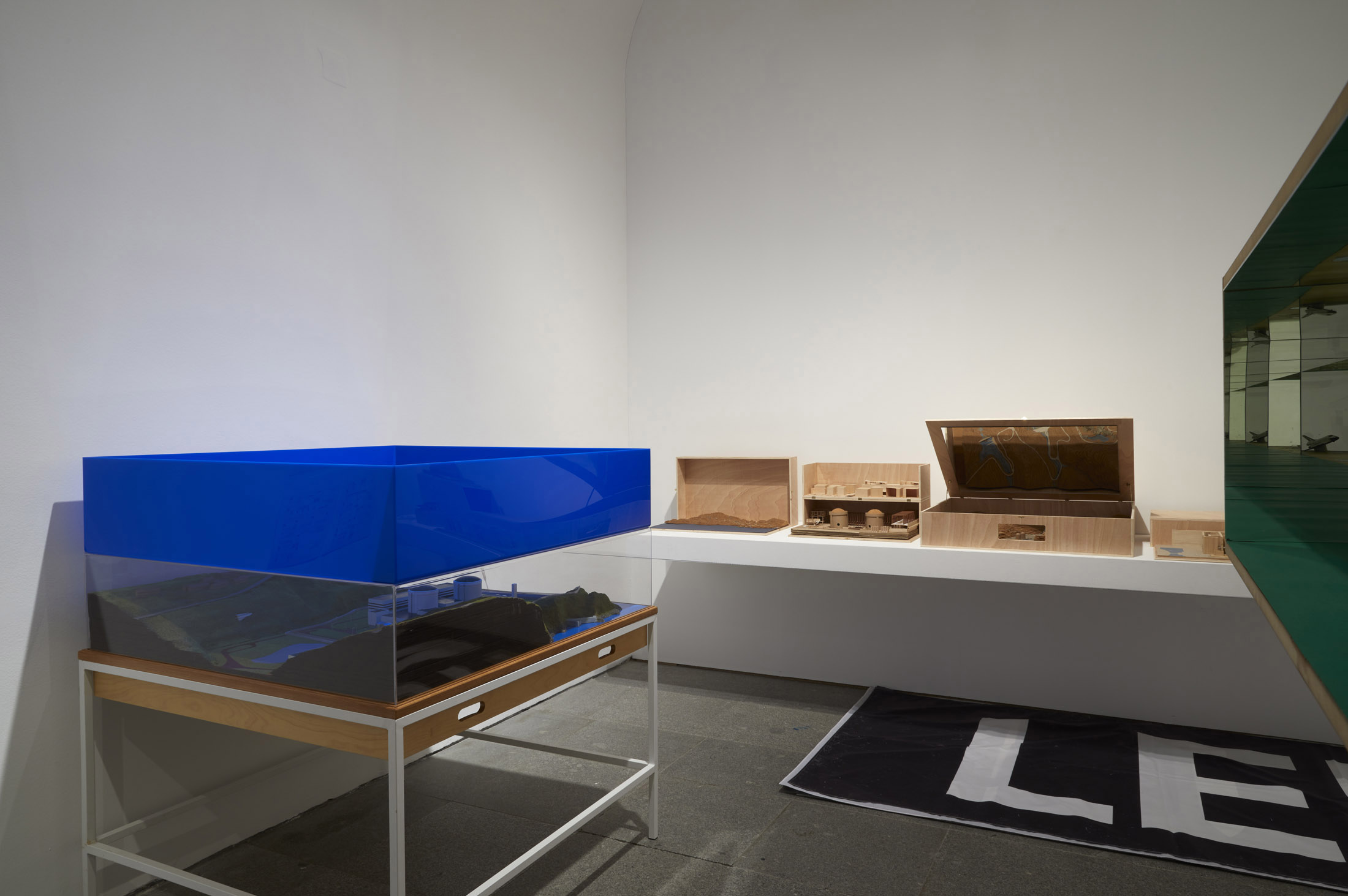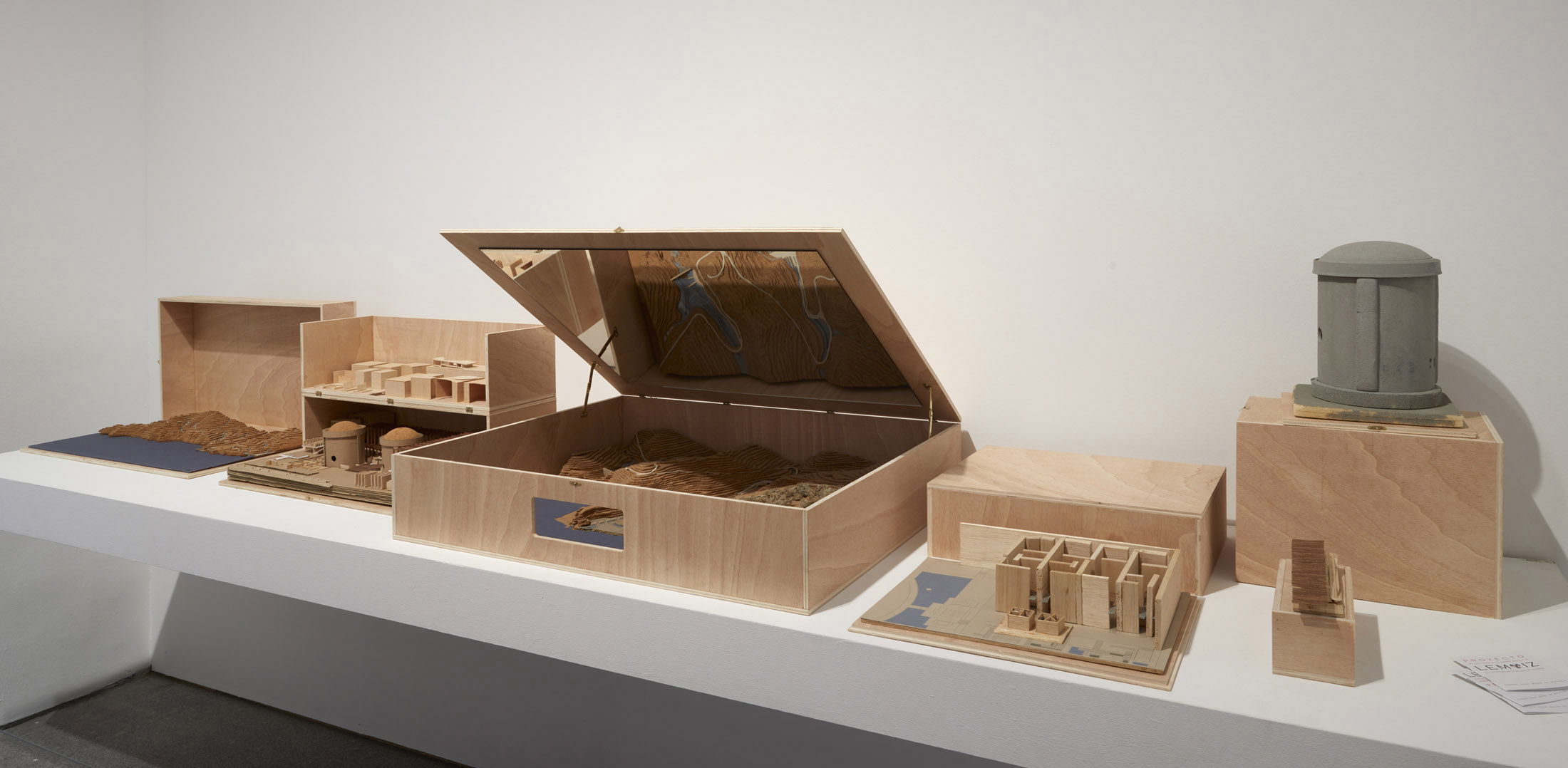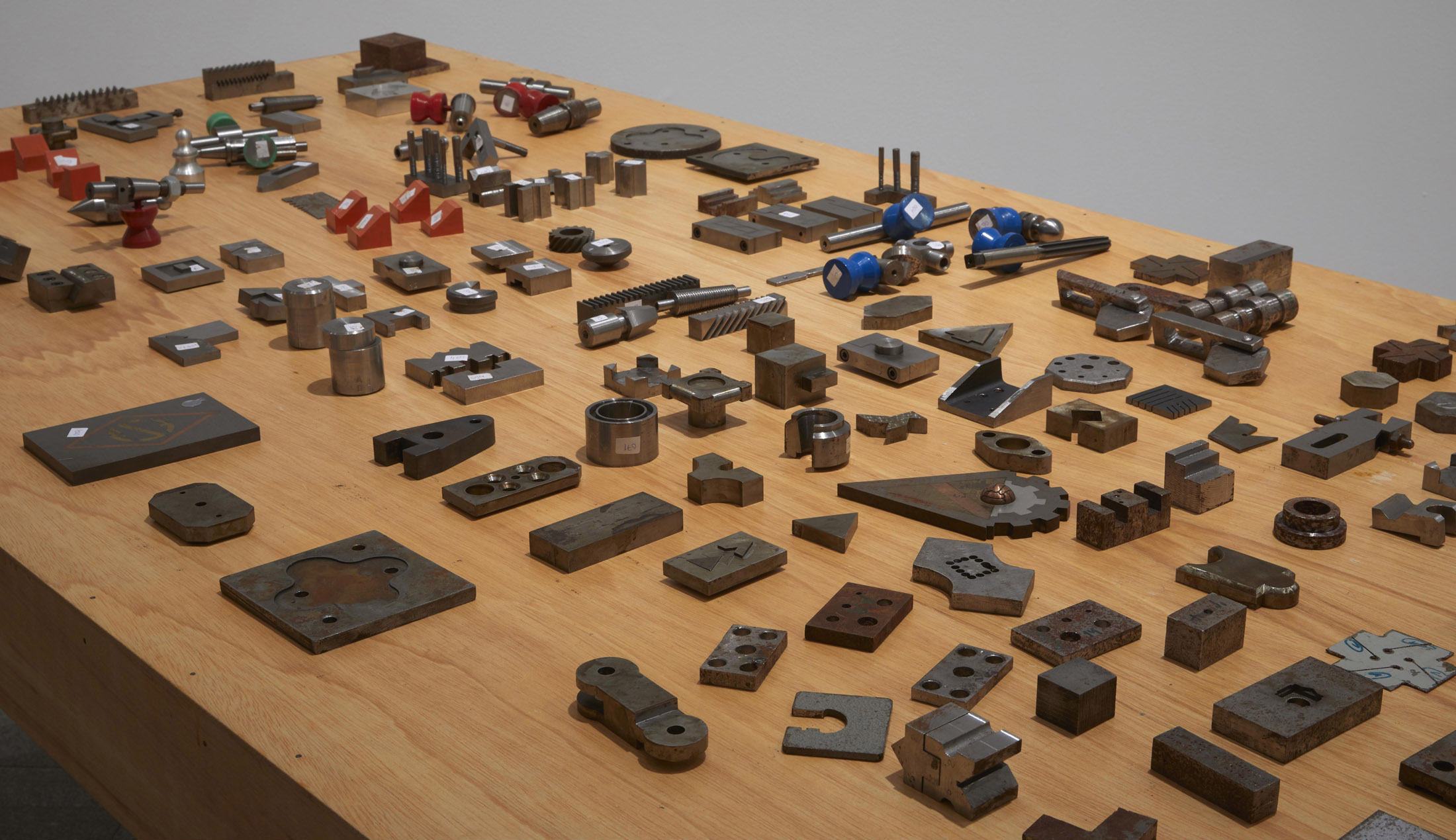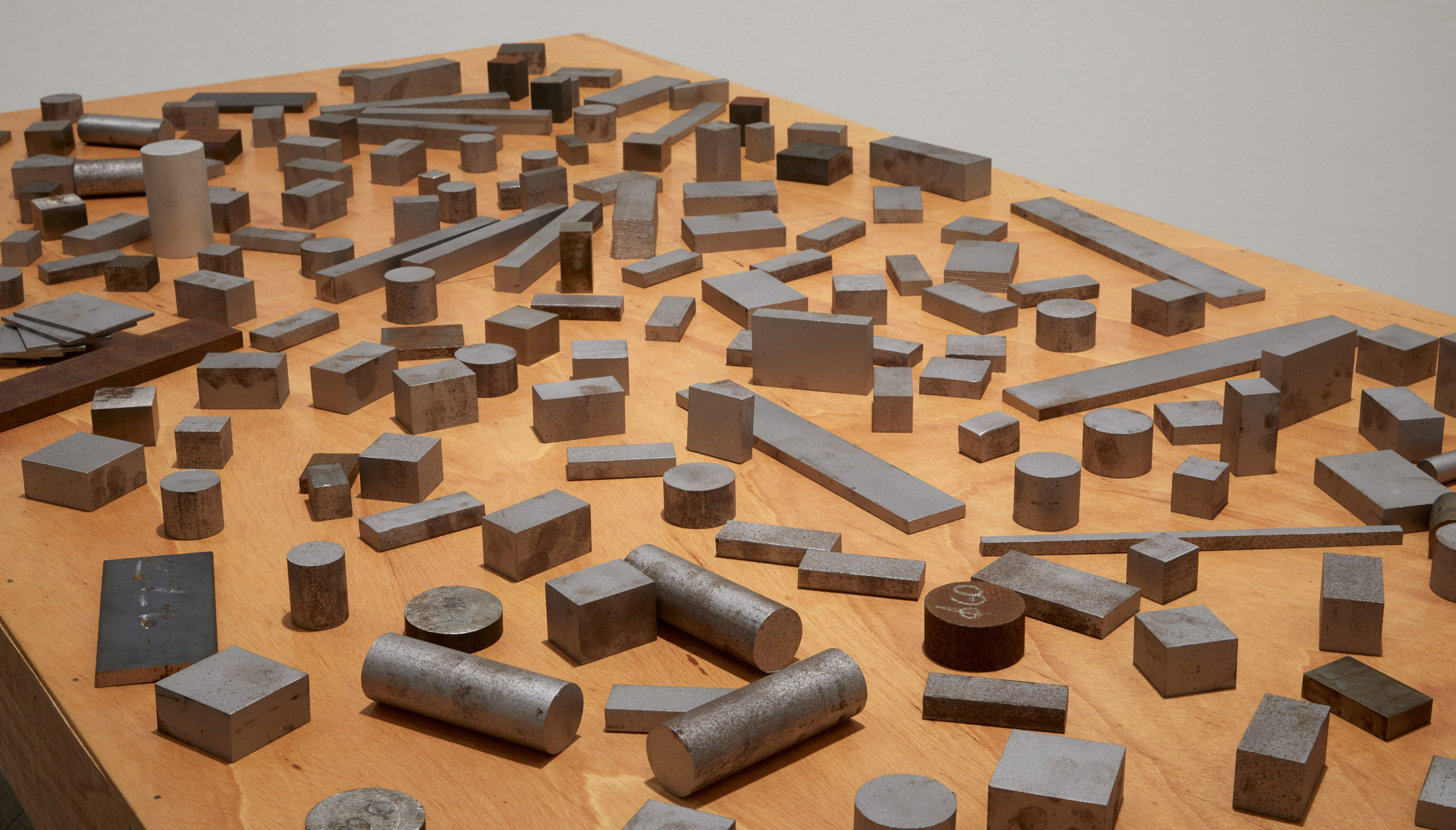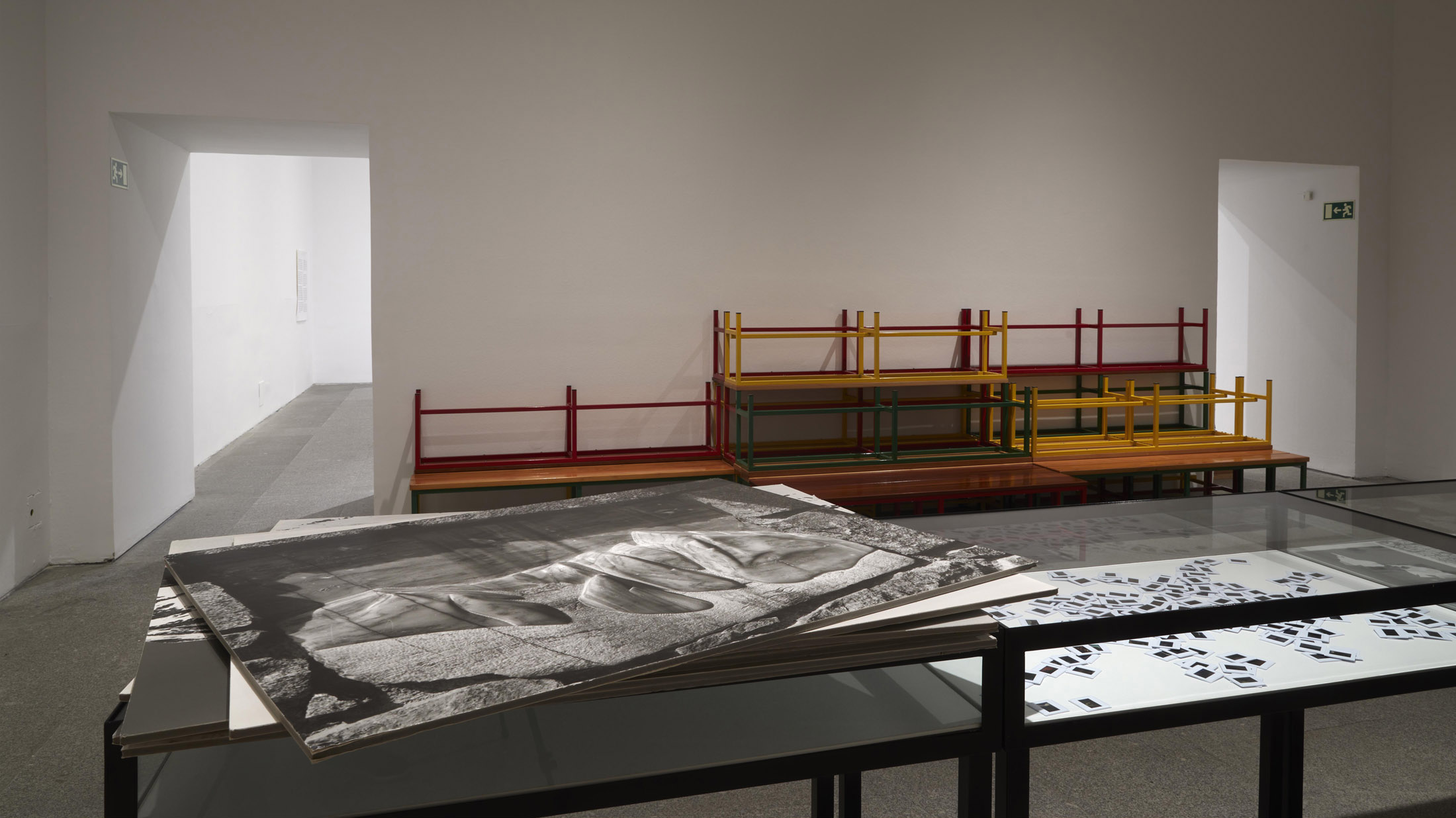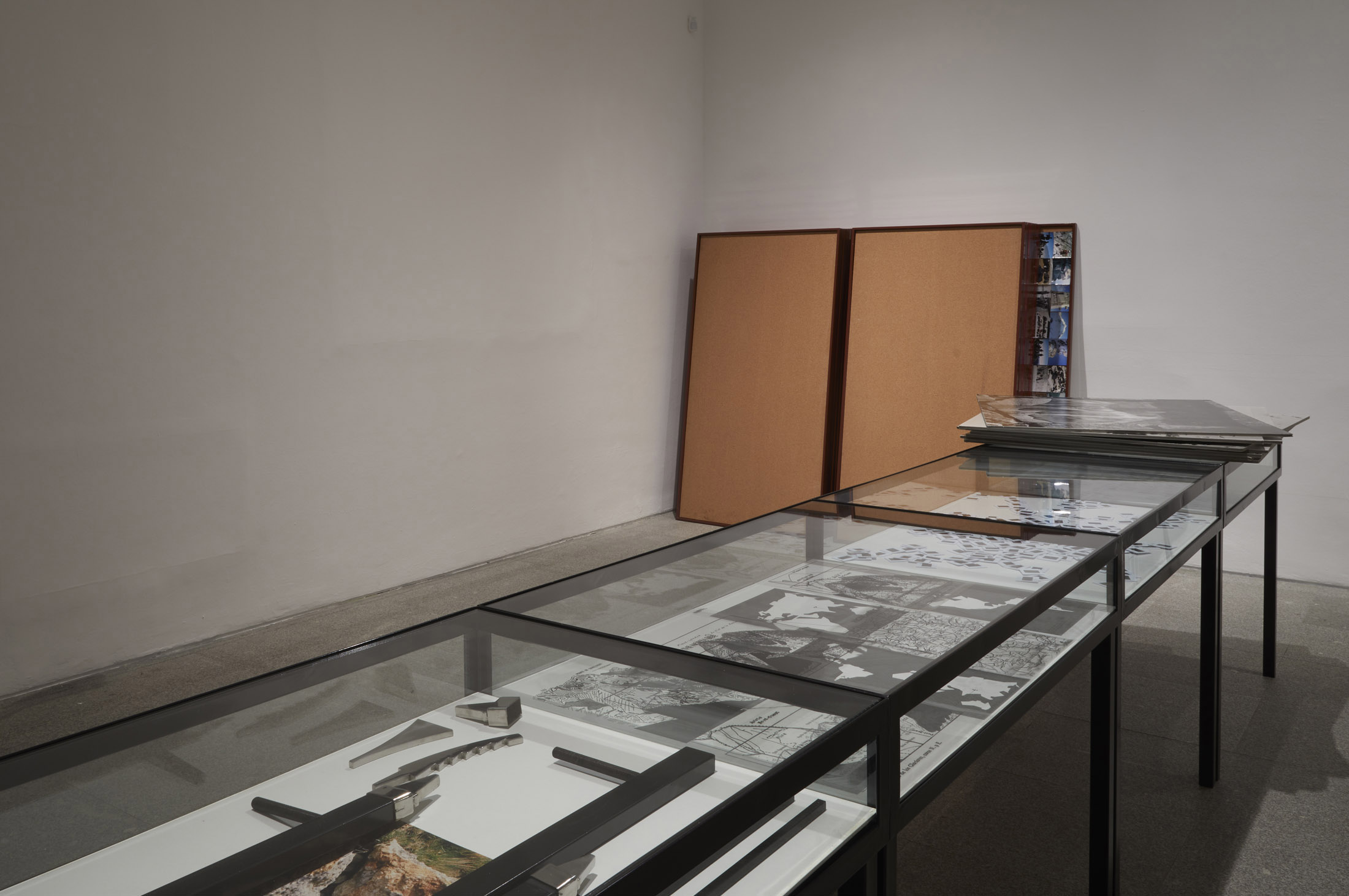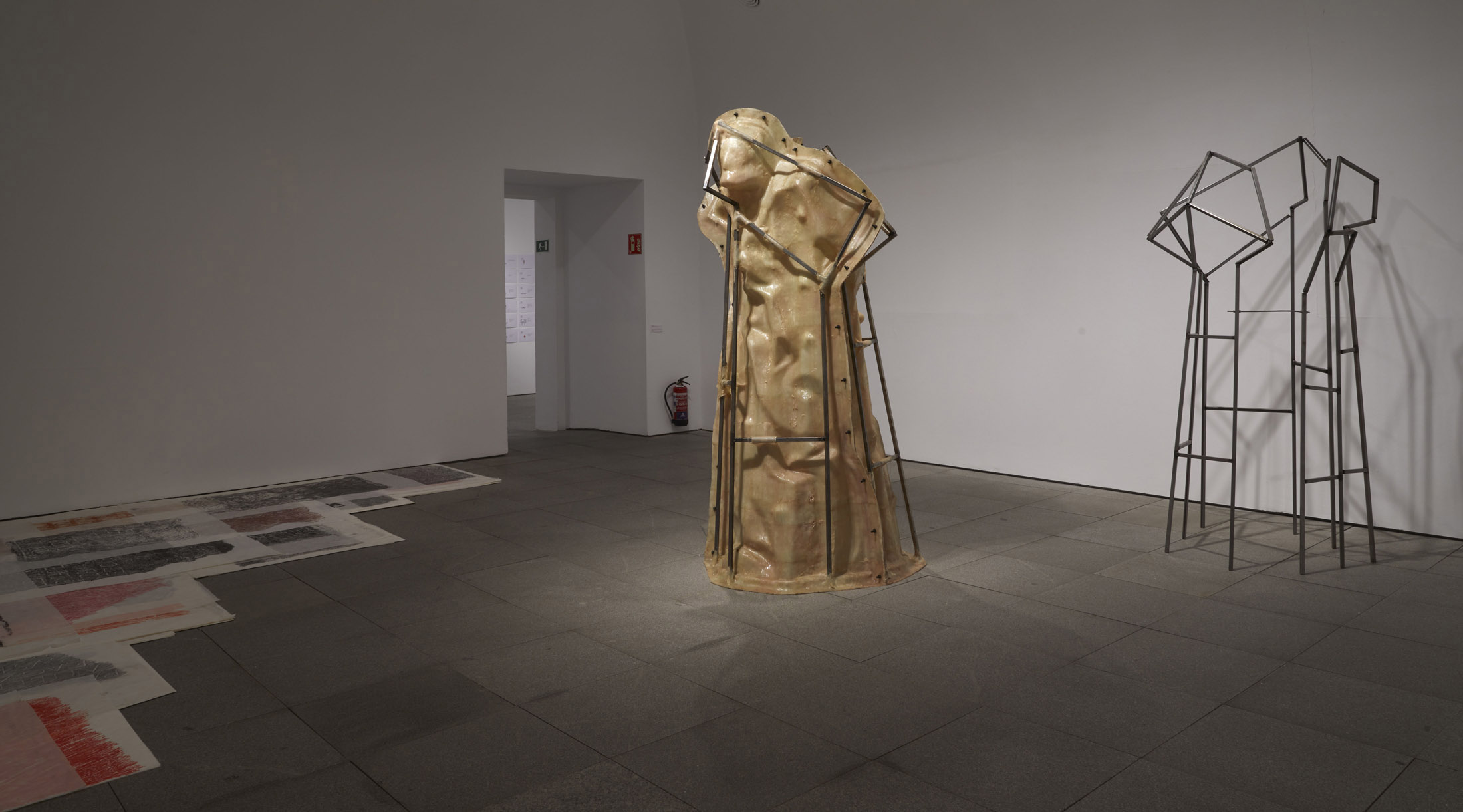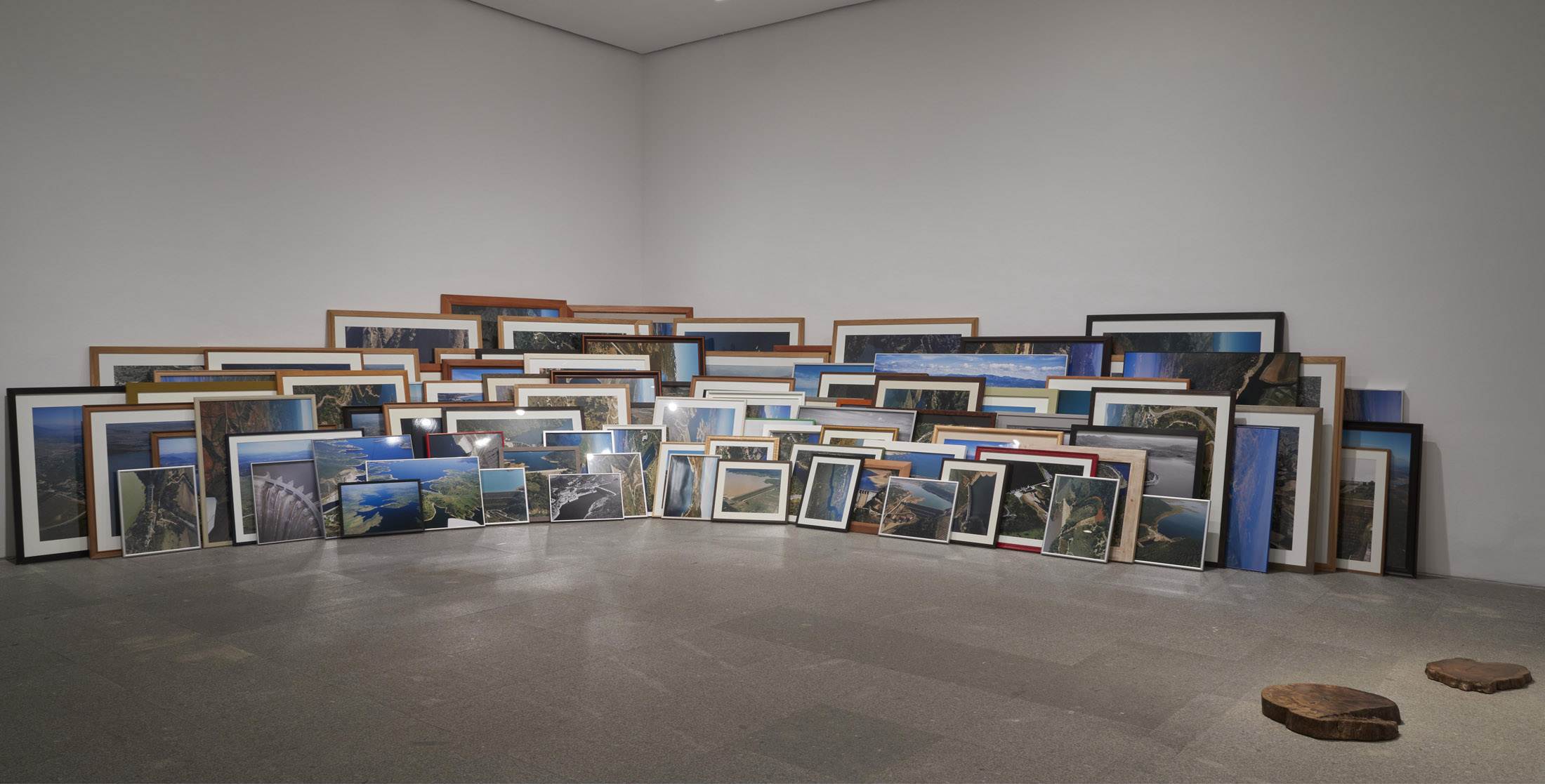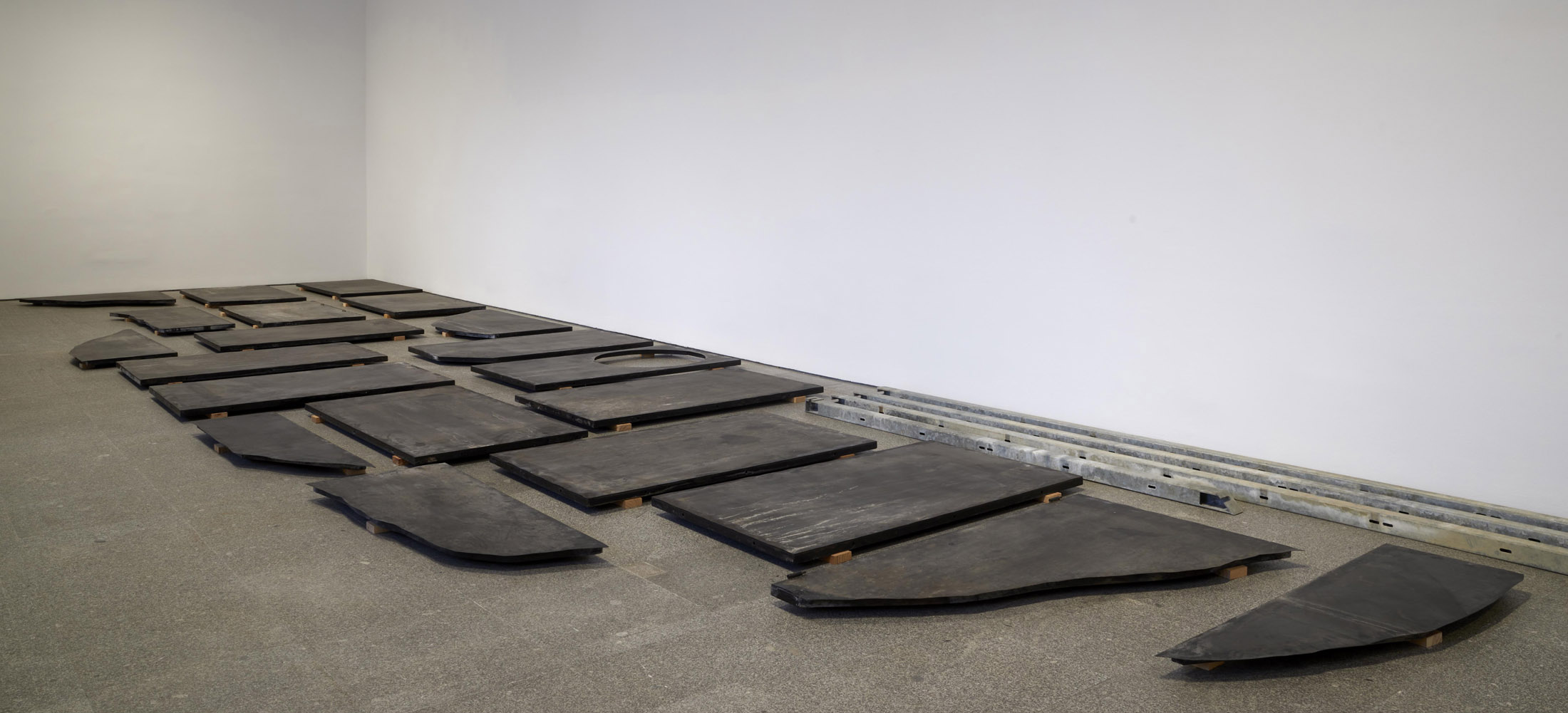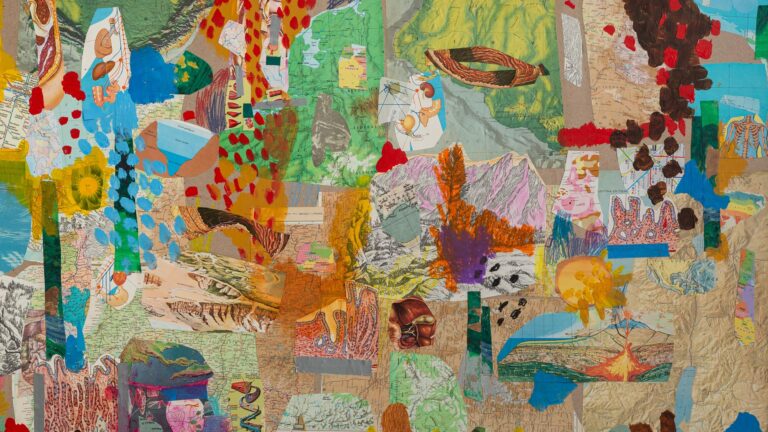Artist: Ibon Aranberri
Exhibition title: Partial View
Curated by: Manuel Borja-Villel and Beatriz Herráez
Venue: Museo Nacional Centro de Arte Reina Sofía, Madrid, Spain
Date: November 29, 2023 – March 11, 2024
Photography: all images courtesy of the ©artist and ©Museo Nacional Centro de Arte Reina Sofía
Partial View is an anthological exhibition on Ibon Aranberri (Itziar-Deba, Gipuzkoa, 1969) that brings together more than 40 works in various formats (photographs, sculptures, installations, videos, slides, etc.) related to his most representative projects of the last three decades, revised and resignified through the artist’s current vision. The show can be seen at the Museo Reina Sofía from November 29 to March 11.
The positioning of the works is fundamental to the significance of this exhibition, which is a labor of reformulation, revision, and reassignation that takes shape in relation to the space it occupies and the projects that surround it. Rather than chronologically, it does so through proximities, synchronies and tangential relationships. The name Partial View arose precisely because, as the artist says, “nothing acquires its original dimension in itself; the narrative is constructed in the intersections, not the centrality. It is also a way of evading the canon of a retrospective that looks back.”
In ten rooms and one gallery, such emblematic works by Ibon Aranberri are exhibited as Política hidráulica [Hydraulic policy], Luz de Lemóniz [Light of Lemóniz] and Gramática de meseta [Plateau grammar], along with other less well-known works. Some of the works are also remade, meaning they are not new but presented differently, such as those related to the intervention in the cave of Oñate (Ir. T. no. 513). “As something uncalculated, responding to an unexpected internal process,” the concepts of landscape, culture, infrastructure, politics, transformation and the trace left by all this in the course of time run through this exhibition on the oeuvre of this Basque artist, whose work already forms part of the Collection of the Reina Sofía, and who has built up a considerable international reputation. “The main characteristic of this exhibition is that it is not so much a unitary presentation of the works as an activation of works that have never been shown alongside one another in this arrangement and connection, and as in a book, one chapter leads onto the next,” says Aranberri.
Territory, landscape and ideology
The exhibition, organized by the Museo Reina Sofía and the Museo de Arte Contemporáneo del País Vasco, Artium museoa, opens with Aranberri’s projects related to some of the issues that have driven the artist since the nineties: the increasingly diffuse contours of the post-industrial landscape, territory as a site for the projection of ideology, the questioning of the material legacy of modernity and its idea of progress, the recovery of techniques and vestiges of earlier ways of life, and the field of artistic experimentation. In the first rooms, we thus encounter the transformation undergone by the landscape through reforestation, which the artist shows in the recordings of Contraplan [Counterplan] (1997) and in the work Disorder (2007), a wooden platform designed as a support for the archive material in Ibon Aranberri’s solo exhibition at the Kunsthalle in Basle in 2007, which has been resignified and reassembled for this show and adapted to the space of the museum.
Next comes Luz de Lemóniz [Light of Lemóniz] (2000), a project/essay related to the unfinished construction of the nuclear power station of Lemóniz (Bizkaia) and the complex narrative created around it from those days until now. It was an extremely controversial affair that stirred up social and political struggle throughout the 1970s, marking a watershed in the emotional memory of the community. This project, which is shown with a fragmented narrative made up of scale models, photographs, and slides, is followed in the exhibition by the action that Ibon Aranberri carried out in a natural prehistoric cave at Iritegui in Oñate (Gipuzkoa) in 2003, consisting of its closure and later reopening. It was almost a performance whose goal was not to protect it but to signify it and recode it.
This action, which lasted for two decades, gives rise to the work Zulo beltzen geometria [Geometry of black holes] (2019), made up of the enormous steel plates that were used to close off the entrance to the cave, and which the artist has shown in various different ways in accordance with the exhibition space. Also on display are the drawings he took of bats, not exhibited in their entirety until now.
In the next room is Mar del Pirineo [Sea of the Pyrenees] (2006), six large scale modules of polyester and glass fiber that reproduce the real, though inverted, cartography of a recreational complex developed next to a hydraulic infrastructure. The name of the complex evokes a fictional or non-existent place: Mar del Pirineo functions as an abstraction of a protected environment that is simultaneously sea and mountain, blue and green.
Following on from this work is one with similar themes, Política hidráulica [Hydraulic policy] (2007), another of the artist’s emblematic pieces forming part of the collection of the Reina Sofía. This is an installation made up of almost a hundred photographs of dams and reservoirs in different sizes and angles taken between 2004 and 2010. With a sculptural dimension, it shows these engineering works which burrow into the landscape and the gaze and appropriate the territory.
The artist’s investigation of the world of mountaineering and its significance as a cinematic genre leads to Exercises on the North Side (2007), a project that brings together photographs, slides, mountain climbing materials and a 16 mm montage with historic images along with sequences created and recorded by the artist himself. The result is a polyhedric display of the languages with which the mountain is represented.
A concern for registering and ordering the heritage
In the last decade, the Basque artist has been especially interested in techniques and processes related to the legacy of early industrialization, reproducing elements or methods for the registering or ordering of the heritage such as Itzal marra [Shadow line] (2019), which shows rubbings of tombstones that had accumulated in the storerooms of the Museo de San Telmo in San Sebastián. This was an inventorying procedure that preceded photography. In the project Sources without Qualities (2017), Aranberri meanwhile reproduces a prototype of furnishing for the classification of objects that is inspired by the industrial era.
The works Almanaque [Almanac] and Compendium (2022) originate in an invitation from the designer Filiep Tacq to intervene on the wall of his studio, located in a woodland village in Cantabria. While the exhibition was being held, a temporary newsletter was published, Almanaque, incorporating knowledge related to nature and descriptions of tools for working in the rural environment. When the intervention finished, each tool was photographed against the background of a white sheet before being returned to its owner. As an evocation of this gesture, the neighbors of the village have generously agreed to lend their tools once more for the current exhibition.
Makina eskua da [The machine is the hand] (2016) is part of the installation produced by Aranberri at the Museo de la Industria Armera in Éibar during the ‘Peace Treaty’ project conducted within the framework of San Sebastián 2016 European Capital of Culture. With Gramática de meseta [Plateau grammar], which has its origin in an exhibition organized by the Museo Reina Sofía at the Abbey of Santo Domingo de Silos (Burgos) in 2010, Aranberri reflects on the destruction of the heritage as a result of the construction of large public infrastructures like highways and reservoirs and the decontextualization of ruins in order to provide them with new symbolic functions.
Other works in the exhibition are related to Ibon Aranberri’s beginnings as a sculptor but are also centered on an interest in the human gaze and collective signification oriented towards specific symbols.
This is the case of the work Models and constructs (2014), whose pretext is the cast for a statue that was to represent the philosopher Miguel de Unamuno. This permits Aranberri to deconstruct the intention of the monument on the basis of its own absence. The remains of the process and the idea of emptiness they evoke leave room for new readings and aesthetic experiences.
Another example is the exhibition of the remains of San Pedro de la Nave. These works interlock with the more recent ones at the end of the room, which center on apprenticeship in the technical and manual professions of industry.
Resignification as a constant element
The idea of space and resignification is interwoven with the whole exhibition, as we see in Organigrama [Organizational chart] (2011), a structure of modular panels with different finishes that Ibon Aranberri used in several exhibitions as a spatial support or distributor, and which in this exhibition becomes an artwork in its own right. Another case is Operatori, which will be seen in its entirety for the first time at the Reina Sofía in Spain after being shown in London at the end of 2022.
The exhibition Partial View is curated by the former director of the Reina Sofía, Manuel Borja-Villel, and the director of the Museo de Arte Contemporáneo del País Vasco, Artium museoa, Beatriz Herráez. It will travel from the Reina Sofía to Artium in April 2024, changing the ways in which the projects are exhibited in order to adapt them to the new spaces, and so once more providing a similar but different reading of Ibon Aranberri’s career.
Ibon Aranberri was born in Deba (Gipuzkoa) in 1969. After studying Fine Arts at the University of the Basque Country, he moved to New York, although he currently resides in Bilbao. He came to international attention after his participation in Documenta at Kassel in 2007, and is currently one of the most widely renowned Basque artists. His works, in different formats, show his concern over collective intervention on territory and landscape. He has exhibited in Japan, Italy, Germany, Sweden, Brazil, the United Kingdom, and other countries, and his work can be found in the public collections of the Museo Reina Sofía in Madrid, ARTIUM in Vitoria, and the MACBA. In 2011, the Fundació Antoni Tàpies in Barcelona dedicated an exhibition to him.
Madrid, November 28, 2023
Ibon Aranberri, Partial View, 2022, exhibition view, November 29, 2023 – March 11, 2024, curated by Manuel Borja-Villel and Beatriz Herráez ©Museo Nacional Centro de Arte Reina Sofía, Madrid
Ibon Aranberri, Partial View, 2022, exhibition view, November 29, 2023 – March 11, 2024, curated by Manuel Borja-Villel and Beatriz Herráez ©Museo Nacional Centro de Arte Reina Sofía, Madrid
Ibon Aranberri, Partial View, 2022, exhibition view, November 29, 2023 – March 11, 2024, curated by Manuel Borja-Villel and Beatriz Herráez ©Museo Nacional Centro de Arte Reina Sofía, Madrid
Ibon Aranberri, Partial View, 2022, exhibition view, November 29, 2023 – March 11, 2024, curated by Manuel Borja-Villel and Beatriz Herráez ©Museo Nacional Centro de Arte Reina Sofía, Madrid
Ibon Aranberri, Partial View, 2022, exhibition view, November 29, 2023 – March 11, 2024, curated by Manuel Borja-Villel and Beatriz Herráez ©Museo Nacional Centro de Arte Reina Sofía, Madrid
Ibon Aranberri, Partial View, 2022, exhibition view, November 29, 2023 – March 11, 2024, curated by Manuel Borja-Villel and Beatriz Herráez ©Museo Nacional Centro de Arte Reina Sofía, Madrid
Ibon Aranberri, Partial View, 2022, exhibition view, November 29, 2023 – March 11, 2024, curated by Manuel Borja-Villel and Beatriz Herráez ©Museo Nacional Centro de Arte Reina Sofía, Madrid
Ibon Aranberri, Partial View, 2022, exhibition view, November 29, 2023 – March 11, 2024, curated by Manuel Borja-Villel and Beatriz Herráez ©Museo Nacional Centro de Arte Reina Sofía, Madrid
Ibon Aranberri, Partial View, 2022, exhibition view, November 29, 2023 – March 11, 2024, curated by Manuel Borja-Villel and Beatriz Herráez ©Museo Nacional Centro de Arte Reina Sofía, Madrid
Ibon Aranberri, Partial View, 2022, exhibition view, November 29, 2023 – March 11, 2024, curated by Manuel Borja-Villel and Beatriz Herráez ©Museo Nacional Centro de Arte Reina Sofía, Madrid
Ibon Aranberri, Partial View, 2022, exhibition view, November 29, 2023 – March 11, 2024, curated by Manuel Borja-Villel and Beatriz Herráez ©Museo Nacional Centro de Arte Reina Sofía, Madrid
Ibon Aranberri, Partial View, 2022, exhibition view, November 29, 2023 – March 11, 2024, curated by Manuel Borja-Villel and Beatriz Herráez ©Museo Nacional Centro de Arte Reina Sofía, Madrid
Ibon Aranberri, Partial View, 2022, exhibition view, November 29, 2023 – March 11, 2024, curated by Manuel Borja-Villel and Beatriz Herráez ©Museo Nacional Centro de Arte Reina Sofía, Madrid
Ibon Aranberri, Partial View, 2022, exhibition view, November 29, 2023 – March 11, 2024, curated by Manuel Borja-Villel and Beatriz Herráez ©Museo Nacional Centro de Arte Reina Sofía, Madrid
Ibon Aranberri, Partial View, 2022, exhibition view, November 29, 2023 – March 11, 2024, curated by Manuel Borja-Villel and Beatriz Herráez ©Museo Nacional Centro de Arte Reina Sofía, Madrid
Ibon Aranberri, Partial View, 2022, exhibition view, November 29, 2023 – March 11, 2024, curated by Manuel Borja-Villel and Beatriz Herráez ©Museo Nacional Centro de Arte Reina Sofía, Madrid
Ibon Aranberri, Partial View, 2022, exhibition view, November 29, 2023 – March 11, 2024, curated by Manuel Borja-Villel and Beatriz Herráez ©Museo Nacional Centro de Arte Reina Sofía, Madrid
Ibon Aranberri, Partial View, 2022, exhibition view, November 29, 2023 – March 11, 2024, curated by Manuel Borja-Villel and Beatriz Herráez ©Museo Nacional Centro de Arte Reina Sofía, Madrid
Ibon Aranberri, Partial View, 2022, exhibition view, November 29, 2023 – March 11, 2024, curated by Manuel Borja-Villel and Beatriz Herráez ©Museo Nacional Centro de Arte Reina Sofía, Madrid
Ibon Aranberri, Partial View, 2022, exhibition view, November 29, 2023 – March 11, 2024, curated by Manuel Borja-Villel and Beatriz Herráez ©Museo Nacional Centro de Arte Reina Sofía, Madrid
Ibon Aranberri, Partial View, 2022, exhibition view, November 29, 2023 – March 11, 2024, curated by Manuel Borja-Villel and Beatriz Herráez ©Museo Nacional Centro de Arte Reina Sofía, Madrid
Ibon Aranberri, Partial View, 2022, exhibition view, November 29, 2023 – March 11, 2024, curated by Manuel Borja-Villel and Beatriz Herráez ©Museo Nacional Centro de Arte Reina Sofía, Madrid
Ibon Aranberri, Partial View, 2022, exhibition view, November 29, 2023 – March 11, 2024, curated by Manuel Borja-Villel and Beatriz Herráez ©Museo Nacional Centro de Arte Reina Sofía, Madrid
Ibon Aranberri, Partial View, 2022, exhibition view, November 29, 2023 – March 11, 2024, curated by Manuel Borja-Villel and Beatriz Herráez ©Museo Nacional Centro de Arte Reina Sofía, Madrid
Ibon Aranberri, Partial View, 2022, exhibition view, November 29, 2023 – March 11, 2024, curated by Manuel Borja-Villel and Beatriz Herráez ©Museo Nacional Centro de Arte Reina Sofía, Madrid
Ibon Aranberri, Partial View, 2022, exhibition view, November 29, 2023 – March 11, 2024, curated by Manuel Borja-Villel and Beatriz Herráez ©Museo Nacional Centro de Arte Reina Sofía, Madrid
Ibon Aranberri, Partial View, 2022, exhibition view, November 29, 2023 – March 11, 2024, curated by Manuel Borja-Villel and Beatriz Herráez ©Museo Nacional Centro de Arte Reina Sofía, Madrid




